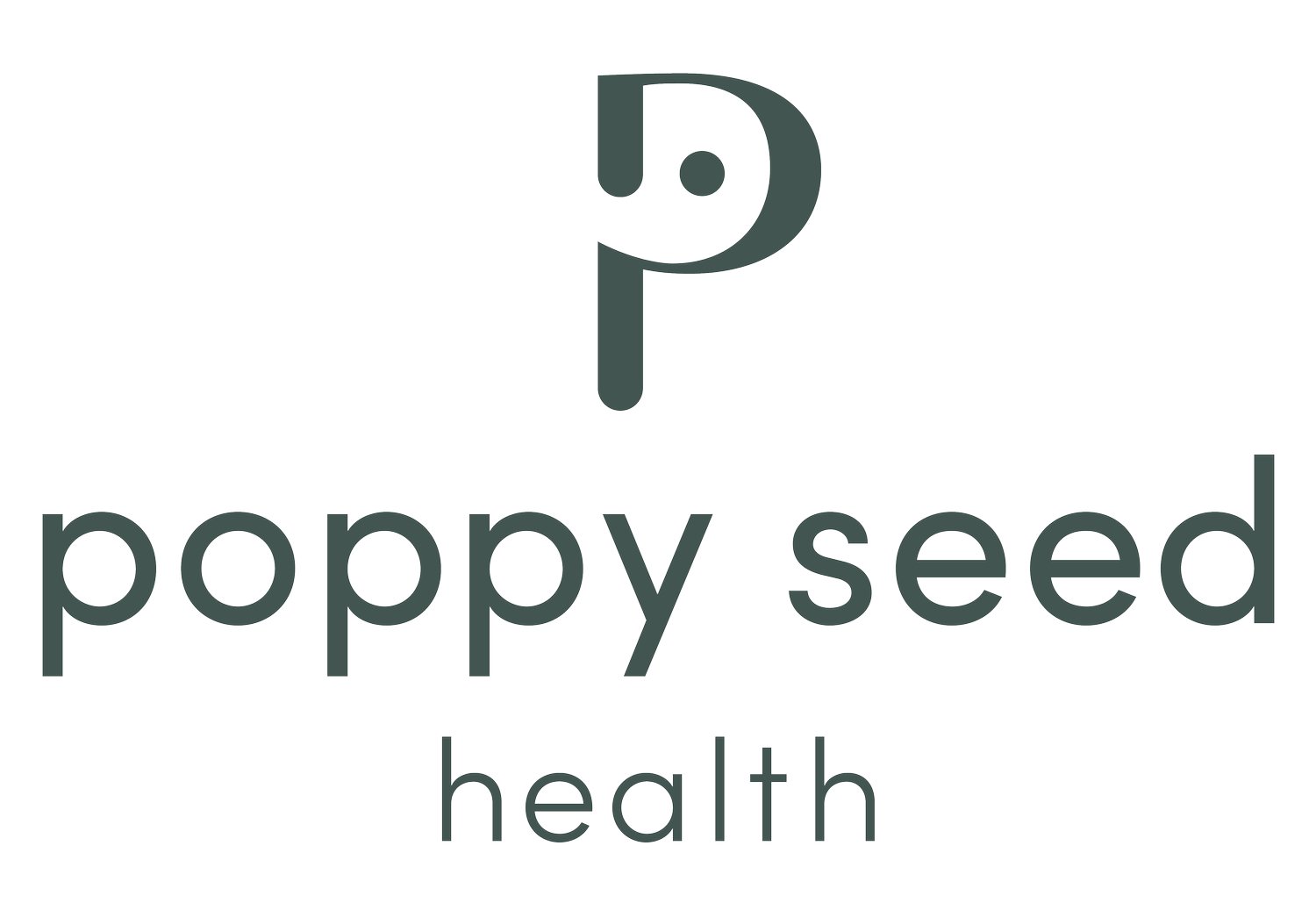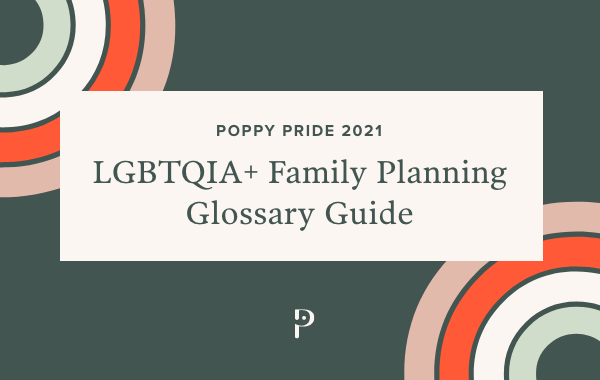LGBTQIA+ Family Planning Glossary Guide
The LGBTQIA+ journey of family planning may be filled with new terms and phrases, so we’re compiling a glossary guide for better understanding and support. This list is ever-evolving and non-exhaustive, and will be updated regularly. We share this in hopes of creating a shared vocabulary that is inclusive and gender-affirming for every family.
We recognize that some terms and definitions will be updated in time—and we are open to suggestions and corrections. We honor the language and labels that best suits you and your path.
Umbrella Terms
Queer: Used historically as a negative term, queer has been reclaimed by some people and is considered inclusive of a wide range of diverse sexual orientations, gender identities and expressions. It may be used as an umbrella term for people with diverse SOGIESC (see below), or as an alternative to the phrase “people with diverse SOGIESC” or the acronym LGBT. Queer is used by many people who feel they do not conform to a given society’s economic, social and political norms based on their sexual orientation, gender identity and gender expression.
LGBTQIA+: An acronym for lesbian, gay, bisexual, transgender, queer and/or questioning, intersex and asexual. The plus sign represents people with diverse SOGIESC who identify using other terms. In some contexts, LGB, LGBT or LGBTI are used to refer to particular populations. Additional characters may be added, such as A for asexual, agender or ally, 2S for Two-Spirit or P for pansexual. Acronyms are not static and continue to evolve over time. To ensure inclusivity and accuracy, they should be applied with careful consideration to, and when possible the consent of, the individuals or populations being referenced.
SOGIESC: An acronym for sexual orientation, gender identity, gender expression and sex characteristics.
Sex characteristics: Each person’s physical features relating to sex, including chromosomes, gonads, sex hormones, genitals and secondary physical features emerging from puberty.
Sex: The classification of a person as having female, male and/or intersex sex characteristics. While infants are usually assigned the sex of male or female at birth based on the appearance of their external anatomy alone, a person’s sex is a combination of a range of bodily sex characteristics (physical features relating to sex, including chromosomes, gonads, sex hormones, genitals and secondary physical features emerging from puberty).
Assigned Sex at Birth: The sex that is assigned to a person at birth, typically based on the infant’s external anatomy; also referred to as birth sex or natal sex. The phrases “assigned female at birth” (AFAB) and “assigned male at birth” (AMAB) refer to people with typical male or female sex characteristics, regardless of their gender identity or gender expression. The phrase “coercively assigned female [male] at birth” (CAFAB and CAMAB) refer to intersex people assigned a binary sex, often via non-consensual surgeries.
Gender: The socially constructed roles, behaviors, activities and attributes that a given society considers appropriate for individuals based on the sex they were assigned at birth.
Cis/cisgender: A person whose gender identity and the sex they were assigned at birth align.
Trans/transgender: Terms used by some people whose gender identity differs from what is typically associated with the sex they were assigned at birth. Trans, transgender and non-binary are “umbrella terms” representing a variety of words that describe an internal sense of gender that differs from the sex assigned at birth and the gender attributed to the individual by society, whether that individual identifies as a man, a woman, simply “trans” or “transgender,” with another gender or with no gender. Note: Transgender is an adjective and should never be used as a noun.
Non-binary: An adjective describing people whose gender identity falls outside the male-female binary. Non-binary is an umbrella term that encompasses a wide variety of gender experiences, including people with a specific gender identity other than man or woman, people who identify as two or more genders (bigender or pan/polygender) and people who don’t identify with any gender (agender).
Personal pronouns: Pronouns are words we use to talk about ourselves (“I”), to someone (“you”) or about other people (“she,” “he,” “they,” etc). In English, “he” and “she,” called third-person pronouns, are gendered, while singular “they” is gender-neutral.
Family Planning Terminology and Phrases
Same-gender relationship: A relationship between people of the same gender. The use of “same-sex,” except in a legal sense, is trans-exclusionary. The assignment of sex is rarely done on a biological basis, gender is distinct from sex and folks should have autonomy in determining whether their relationship is same-gender or not, independent of the care provider who checked their genitals at birth and declared them a particular sex.
Artificial insemination: A process in which sperm is placed in an individual's reproductive tract using means other than sexual intercourse, with the goal of that sperm inseminating an egg. Insemination can involve placing sperm into the cervix (intracervical insemination, or ICI) or the uterus (intrauterine insemination, or IUI).
Intrauterine insemination (IUI): A process of insemination that puts sperm cells directly into the person’s uterus near or during ovulation. This cuts down on the time and distance sperm has to travel, making it easier for fertilization. IUI can be performed at home with natural cycle monitoring and a trained practitioner, at home with the support of a clinic for monitoring and a trained practitioner to perform the IUI, or at a fertility clinic. Medication may or may not be used to augment egg production during an IUI cycle. IUI is always performed with washed sperm.
Intra-cervical insemination (ICI): The process of inserting semen into the cervix, which can be done at home or at a fertility clinic. It's performed using unwashed sperm (all the natural fluid and cells are held together with the sperm instead of "washed" or removed) which is one of the reasons it is less expensive and generally easier than IUI.
In-vitro fertilization (IVF): A process that involves stimulating ovaries to develop multiple eggs, and then fertilizing those eggs with sperm in the laboratory to make embryos. Those embryos grow in the laboratory for a few days, and then are placed back into the uterus through either a fresh or frozen transfer. IVF may be done with the individual's own eggs, a partner's eggs (reciprocal IVF) or another individual's eggs (donor cycle IVF).
SART: The Society for Assisted Reproductive Technology, an organization that over 90% of fertility clinics in the U.S. choose to report to. SART data is freely available online, and the rates posted reflect data from only a few years prior.
Bio-parent: A person whose biological reproductive DNA is shared with the child.
Surrogacy: A process by which an individual carries a child or children not biologically related to them with the intention of placing that child with another family.
Gestational carrier or birthing person: A person who carries and gives birth to a baby.
Non-gestational parent: A parent who does not carry and birth their baby.
Egg donation: A process where an individual donates their eggs to another person - birth is not involved for the egg donor.
Birth Parent: In an adoption, the person who is biologically the parent of the child.
Open adoption: An “open” adoption structure varies, but this typically means that the birth parents and adoptive family speak before and after the child is born, and generally continue to share updates throughout the child’s life. This structure is opposite of a “closed” adoption, where the identity of the birth mother remains confidential, and there is no contact between the families.
Transracial adoption: An adoption in which the child’s race differs from that of one or both of the adoptive parents.
Foster parent: A parent who is caring for a child for a temporary period.
Placement (adoption): The event of a child being adopted being placed with their adoptive family.
Thank you to Jenn Rumbach (she/her or they/them) for contributing to this glossary guide. They are a proud Poppy advocate and a queer, full-spectrum doula committed to anti-racist, anti-ableist and queer, trans-, non-binary-, agender- and intersex-affirming birthwork helping people navigate their family building journeys.
Sources:
IOM UN Migration, SOGIESC Glossary of Terms, May 2021
IOM Guidance on Gender Inclusive Communication, May 2021

